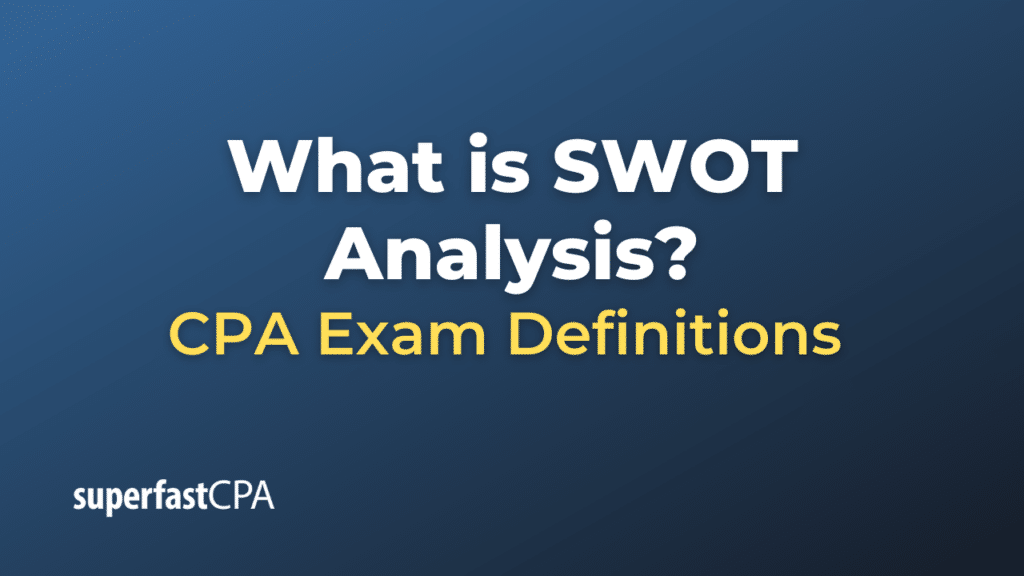SWOT Analysis
SWOT Analysis is a strategic planning tool used to evaluate an organization’s internal and external environment. The acronym “SWOT” stands for:
- Strengths: Characteristics of the organization or project that give it an advantage over others.
- Weaknesses: Characteristics that place the organization or project at a disadvantage relative to others.
- Opportunities: Elements in the environment that the organization or project could exploit to its advantage.
- Threats: Elements in the environment that could cause trouble for the organization or project.
Here’s a more detailed breakdown:
- Strengths and Weaknesses are typically internal factors. They might pertain to aspects like the company’s assets, processes, people, or current business resources. Evaluating these can provide insight into what a company is doing well and where improvements can be made.
- Opportunities and Threats are usually external factors. This might involve market trends, economic shifts, funding, demographics, partnerships, or other external measures. Identifying these can help businesses navigate potential future challenges or leverage new possibilities.
Example of SWOT Analysis
Let’s dive into a detailed SWOT Analysis for a hypothetical e-commerce company that specializes in selling eco-friendly products:
EcoShop Online: SWOT Analysis
Strengths:
- Eco-Friendly Branding: EcoShop’s strong commitment to the environment resonates with a growing market of eco-conscious consumers.
- Diverse Product Range: Offers a wide range of eco-friendly products, from home goods to personal care.
- Efficient Supply Chain: Established partnerships with reliable eco-friendly suppliers ensure consistent product availability.
- Strong Online Presence: Effective SEO practices have placed EcoShop’s website on the first page of relevant search results.
Weaknesses:
- Limited Market Penetration: Most customers are from North America, limiting global market reach.
- Dependency on Third-Party Logistics: Outsourced logistics sometimes leads to delivery delays, affecting customer satisfaction.
- Higher Price Points: Eco-friendly products tend to be priced higher than conventional alternatives, potentially deterring budget-conscious consumers.
- Website User Experience: Some users find the website hard to navigate, particularly on mobile devices.
Opportunities:
- Market Expansion: With growing global awareness about environmental issues, there’s potential to expand to European and Asian markets.
- Collaborations: Partnering with eco-conscious influencers can boost brand awareness and credibility.
- Subscription Boxes: Introducing monthly eco-friendly product subscription boxes can generate consistent revenue and introduce consumers to a wider range of products.
- Sustainability Initiatives: Engaging in tree-planting or ocean cleanup initiatives can further bolster the company’s eco-friendly image.
Threats:
- Increasing Competition: More e-commerce sites are emerging with an eco-friendly angle.
- Economic Downturn: Economic uncertainties can lead consumers to opt for cheaper, non-eco-friendly alternatives.
- Regulatory Challenges: Changing regulations around product standards, especially in international markets, may pose compliance challenges.
- Supply Chain Disruptions: Political or climatic factors can affect the consistent availability of eco-friendly raw materials.
With this SWOT Analysis, EcoShop Online can develop strategies to:
- Leverage its strengths to maximize opportunities (e.g., use its eco-friendly branding to promote the introduction of subscription boxes).
- Use its strengths to minimize threats (e.g., rely on its efficient supply chain to navigate potential supply chain disruptions).
- Work on its weaknesses to exploit opportunities (e.g., revamp the website for better user experience before expanding to European and Asian markets).
- Improve weaknesses to defend against potential threats (e.g., diversify logistic partners to avoid delivery delays due to increasing competition).
This example showcases how a SWOT Analysis can be a foundational tool in strategic planning for businesses.













